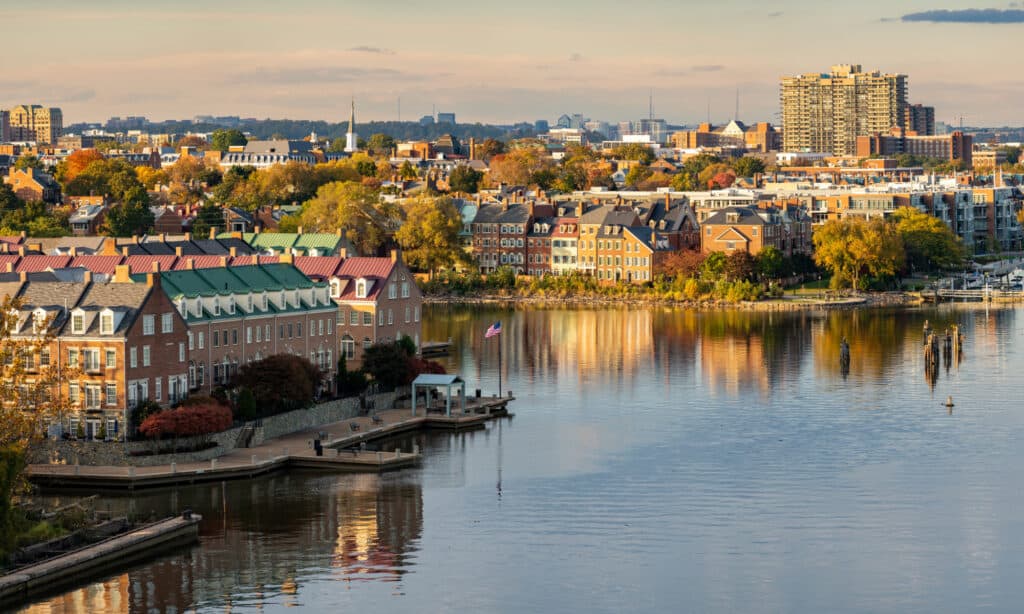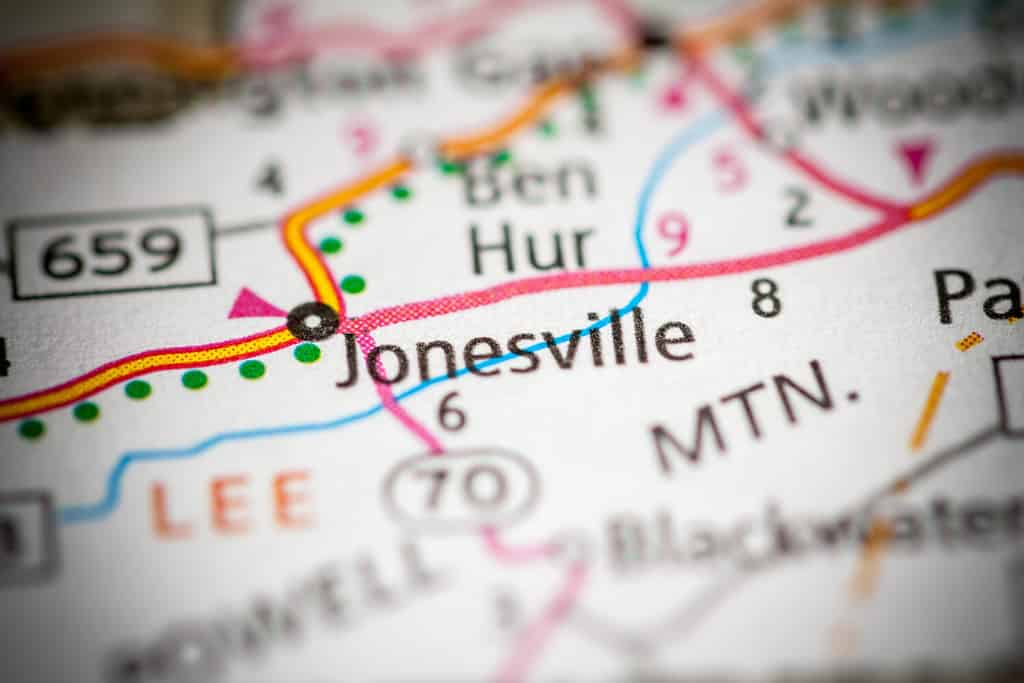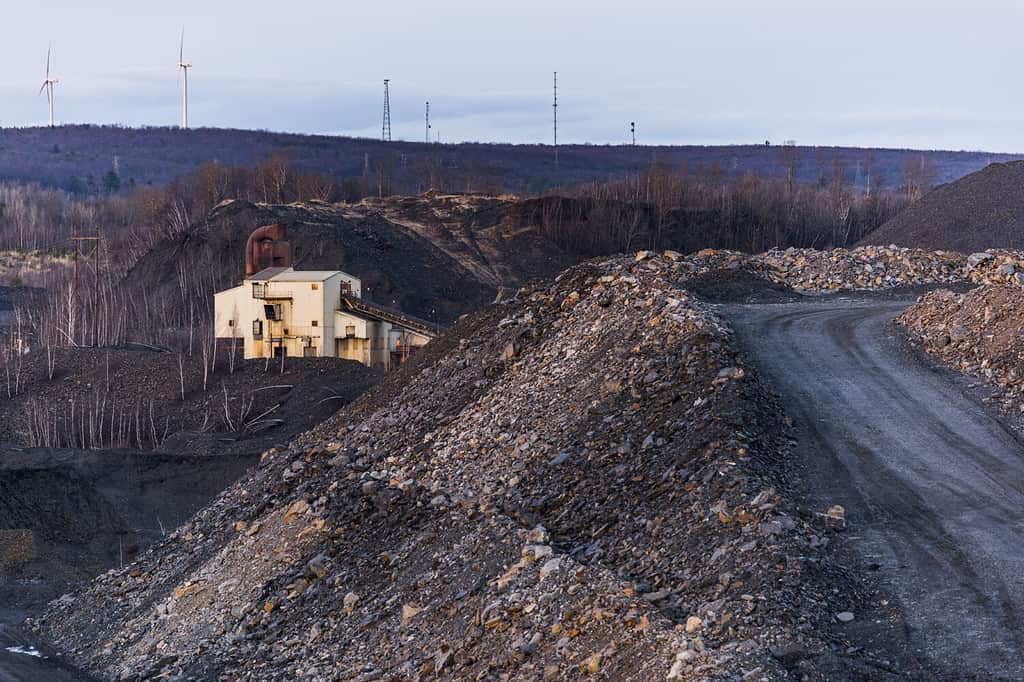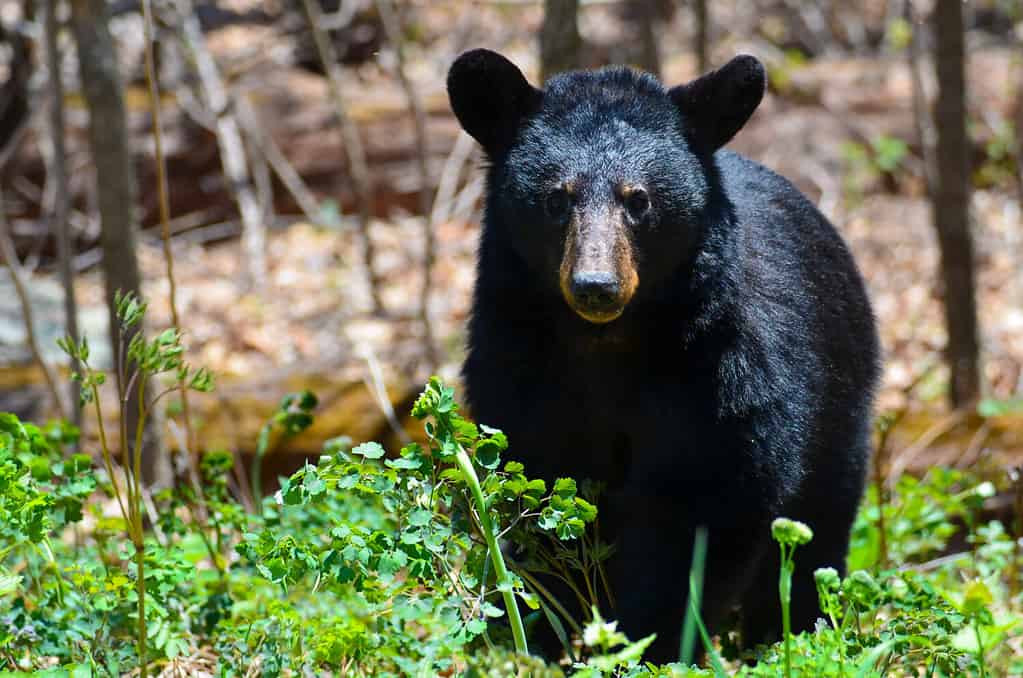Virginia‘s economic development is a mixed bag. Its economy is the 13th largest of the states, and in population, it will surpass New Jersey and Michigan by 2040. However, the rural areas of the state lag behind the heavily populated coastal plain and Washington D.C. suburbs. Determining the poorest town in Virginia is challenging for several reasons, but we managed to nail it down. We share what makes this town struggle and how it might turn around.
General Economic Trends in Virginia

Alexandria, VA, lies across the Potomac River from Washington, D.C. It’s a popular suburban community.
©iStock.com/BackyardProduction
At one level, Virginia shows all the signs of a developed, prosperous, and growing state. Its economy ranks 13th out of the 50 United States. The economy has a diverse basis in mining, agriculture, manufacturing, shipbuilding, hosting major military bases, and providing suburban housing for commuters working in Washington D.C.
However, the state’s development is uneven. Coal-mining counties in the Appalachians lack jobs and population as the world shifts toward cleaner energy sources. Similarly, declining demand for tobacco products has crushed agricultural income in the central Piedmont. Even some parts of the urbanized north and east are feeling the effects of changing trends, such as the shift to a work-from-home economy. The Census Bureau estimates that 10.6% of the state population lives below the poverty line. However, this is lower than the national average of 13.15% and much lower than Mississippi at 19.58%.
How Does Virginia Distinguish “Towns” from “Cities?”

The General Assembly of Virginia must approve charters for towns and cities in the state.
©Sean Pavone/Shutterstock.com
In Virginia, any area with a boundary encompassing at least 1,000 people can petition the state General Assembly to grant them a town charter. A town remains part of the county where it is located, and the county maintains the roads. When a town grows to at least 5,000 residents, it can petition the state legislature again to change its designation to “city.” If this change is approved, the city becomes independent of its county.
“City” status has some financial benefits for the community. Cities get a fixed grant of road-building funds every year, whereas counties (and the towns within them) have to compete with one another for their share of maintenance funds based on where the needs are greatest. Cities can also issue bonds without first seeking the citizens’ permission, whereas counties are required to have a referendum before borrowing through bonds for infrastructure projects.
What Are Some Ways to Measure Poverty?

When the U.S. Census last took place in 2020, it missed collecting data on 18.8 million people.
©Ralf Geithe/Shutterstock.com
It’s surprisingly difficult to determine which is the poorest town in Virginia. It depends on what data set you look at, the years covered, and what standard of “poor” you use. The U.S. Census Bureau measures poverty based on factors of income, family size, and family composition. They use the same national thresholds but adjust them annually for inflation. Moreover, they assess a family’s income threshold based on an average of the incomes of all the people living in the household, even if they are not using their earnings to provide for the needs of the rest of their family.
Many nonprofits and international agencies say we need to look at the quality of life as reflected in the availability and quality of education, health care, recreation, and issues of security and safety. It’s also important to find ways to measure poverty among people the Census missed.
What Is the Poorest Town in Virginia?

Jonesville, in Lee County, is currently the most impoverished town in Virginia.
©SevenMaps/Shutterstock.com
Keep in mind that many of the lists of impoverished communities in Virginia only contain cities that have 5,000 or more in population. Looking at data only for towns, Jonesville, VA, population 1,355, is in the worst economic shape of any town in the state. Jonesville is part of Lee County – the county at the extreme westernmost point of the state bordering Tennessee and Kentucky.
The U.S. Census Bureau’s 2021 American Community Survey showed that the average annual family income in Jonesville is just $17,344. This is an astounding 78.5% less than the median household income in the state: $80,615. As a result, 46.9% of the town’s residents live below the poverty line. Many indices of poverty in Jonesville paint a bleak picture of the town’s present condition and projected trends for the coming years.
Why is Jonesville Suffering So Much Economically?

The decline of coal mining has hurt the economy of Jonesville and Lee County.
©The American Explorer/Shutterstock.com
Jonesville is an isolated Appalachian town at the intersection of I-58 and I-70. Job-creating businesses often prefer to locate in areas with more transportation infrastructure convenient to major population centers. The closest city to Jonesville is Johnson City, TN, located an hour’s drive to the southeast. Lee County has a comparatively low educational level and has been hit by the opioid crisis, as have many other communities in the region. The town is in a region dependent on tobacco and coal mining for its income. Demand for both is in decline nationally.
How Could Jonesville Turn Things Around?
If anyone had the perfect answer to the problem of rural poverty, there wouldn’t be any rural poverty. Here are examples of some things that have helped other communities, though:
1. Capitalize on Assets

Wildlife and natural beauty are two of the greatest assets of Appalachia.
©Orhan Cam/Shutterstock.com
Rather than beginning by focusing on a community’s deficits, Asset-Based Community Development engages residents in exploring what is good about the place they live. No doubt, for Jonesville the area’s natural mountain beauty, wildlife, and area history are unique assets that could potentially draw visitors and investment.
2. Replacement Crops
Vineyards have become a multi-billion dollar business in Virginia that helps replace some of the lost revenue from tobacco. Wine trails are advertised to attract tourist dollars from out-of-state. With the growing demand for natural, organic foods, and free-range animal products, small communities can potentially pull in high profit margins from small enterprises.
3. Attract New Residents

Research shows immigrants are 80% more likely to start businesses than local people.
©fizkes/Shutterstock.com
As technology allows more people to work remotely, smaller communities may start to attract “digital nomads” who might prefer to spend a good bit of their year in a bucolic mountain village. Demographic projections indicate that immigration will cause the overall population of Virginia to grow, rather than shrink over the next two decades. With such a shortage of employment, it may seem counterintuitive for Jonesville and similar towns to open their arms to international immigrants. However, as a recent MIT study indicated, international immigrants are 80% more likely to start businesses than native-born Americans. As a result, they create employment not only for themselves but for local people as well.
Consider Driving Through Lee County

Why not get off the boring beaten path and explore fast-disappearing towns like Jonesville?
©tommaso79/Shutterstock.com
Millions of Americans take driving vacations every year on Interstate 81 between Virginia and Tennessee or Interstate 75 between Kentucky and Tennessee. With that kind of travel, you’ll see mountains, forests, and some rural farmland, but learn little about life in the area. Why not slow things down and take a detour through the mountains to Lee County? Check out the area’s natural beauty and the fast-disappearing historic architecture. Spend some money in local-owned stores and cafes and talk with people who are willing to share their stories. It’s a practical way to visit a disappearing part of America, and with your support, maybe keep it around a little longer.
The photo featured at the top of this post is © Film Adventure/Shutterstock.com
Thank you for reading! Have some feedback for us? Contact the AZ Animals editorial team.







